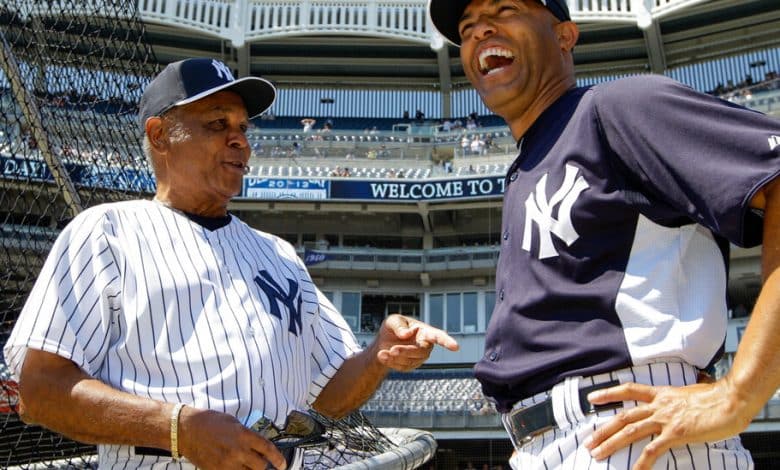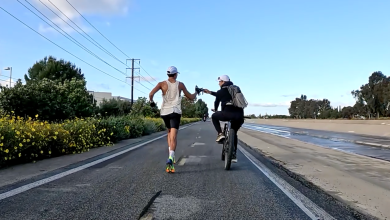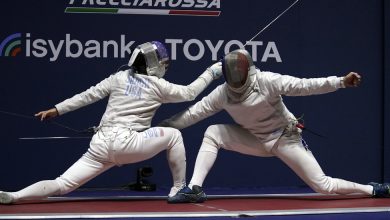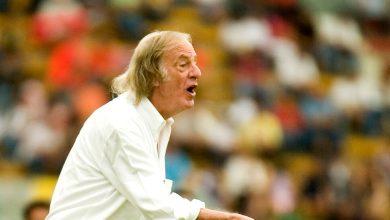Hector Lopez, Who Broke a Baseball Color Barrier, Dies at 93

Hector Lopez, the first Black manager at the highest level of minor league baseball and one of the last living members of the early 1960s Yankees dynasty, playing outfield alongside Mickey Mantle and Roger Maris, died on Thursday. He was 93.
His death was confirmed by his son Darrol Lopez, who said he died of complications from lung cancer at a hospital in Hudson, Fla.
A native of Panama, Lopez was one of the first Black players for the Yankees, appearing in five consecutive World Series. He was the very essence of a utility player, a capable nonstar who filled in as an infielder and an outfielder wherever there was a need.
In the fifth and final game of the 1961 World Series against the Cincinnati Reds, he smashed a home run and a triple and drove in five runs in a 13-5 victory.
Lopez was released by the Yankees after the 1966 season, in which the team finished 10th and last, ending his 12-year playing career with a .269 average and 136 home runs. He played in the minor leagues for a couple of seasons, hoping to return to the majors, but instead, in 1969, he was named manager of the Buffalo Bisons, then the Triple-A affiliate of the Washington Senators (now the Texas Rangers).
A New York Times headline read: “Hector Lopez Slides Safely Into Buffalo as First Negro Pro Baseball Pilot.” Lopez, lacking a star pedigree or much experience in coaching, was an unlikely trailblazer. George Vecsey wrote that as an aging minor league player in Buffalo, Lopez was “a helpful senior citizen to Washington Senator farmhands” and got the job because he was “in the right place at the right time and by wanting the job.”
“Good for Hector,” Elston Howard, the first Black Yankees player, said. “This is a good break for him.”
Lopez led the Bisons for just one season. It would be six more years before Frank Robinson would become the first Black manager in the big leagues, with the Cleveland Indians.
Over a 12-year career that began with the Kansas City Athletics in 1955, Lopez played every position on the field except pitcher and catcher, though it could be argued that his versatility wasn’t entirely a strength.
Playing in an era before the designated hitter, he was known as a solid hitter who was iffy with the glove no matter where he played and, according to Vecsey, he was known as Hector “What a Pair of Hands” Lopez, because of his “exciting duels with ground balls.”
In Kansas City, where he was mostly an infielder, he hit 67 home runs but made 116 errors in just over four seasons. After he was acquired by the Yankees, along with the pitcher Ralph Terry, early in the 1959 season, he played mostly outfield, where he would presumably do less damage, but did little to dispel his reputation as a poor fielder.
His first year in New York, he made 17 errors in 76 games at third base (and three more in the outfield); however, he hit .283 with 16 homers for the Yanks, and including his time with Kansas City, drove in 93 runs for the 1959 season. His new manager, Casey Stengel, described Lopez, “a man which batted in 93 runs,” as a conundrum: “If I bench him I bench 93 runs, but I would like better fieldin’ outta my 93 runs.”
This was the start of a dynastic period for the Yankees — from 1960-64, they were American League champions every year, capturing the World Series in 1961 and 1962 — and Lopez often played in the same outfield with the star sluggers Mantle and Maris or substituted when one or the other was injured, a not infrequent occurrence.
Living in Brooklyn during his early Yankee years, as an indication of both the times and his secondary role on the team, he commuted to work in the Bronx on the subway, largely without being recognized. In eight years as a Yankee, he hit .262, respectable for a utility man, but he was better in the postseason, hitting .286 in 15 World Series games.
Hector Headley Lopez Swainson was born on July 8, 1929, in Colon, Panama, where his father, a salesman, was a pitcher in local leagues. Young Hector graduated from an English-speaking high school and for a while studied auto mechanics and worked in a bowling alley.
He played in amateur and professional leagues in Panama before a scout spotted him and signed him to play for a professional team in Quebec that would eventually become affiliated with the Athletics. Lopez played four minor league seasons and part of a fifth before becoming the regular third baseman for a hapless Kansas City club that had recently relocated from Philadelphia.
Lopez lived for many years on Long Island, where he worked for the parks department in Hempstead and for a time coached high school baseball. Later, he and his wife, the former Claudette Joyce Brown, whom he married in 1960, moved to Hudson, Fla., near Tampa, and he served as a scout, a coach and a minor league instructor for the Yankees. He returned to managing briefly to lead the Yankees’ Rookie-level team in 1994 and 1995 (where Darryl Strawberry played his first games with the Yankees organization).
“Just being able to play in the big leagues for as long as I did at the time that I played is something I’m proud of,” Lopez said in an interview for the 2002 book “That Was Part of Baseball Then,” by Victor Debs Jr. “There was a lot of competition, a lot of great players during the ’50s and ’60s. Plus the fact that there weren’t that many Black ballplayers at that time. Especially in the American League. So I guess you can say I made the most out of my opportunities.”
Vimal Patel contributed reporting.




